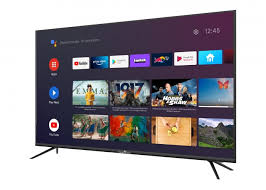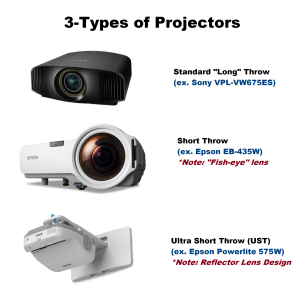What is a Smart TV? How It Works, Applications, and Safe Usage

1. What is a Smart TV?
A Smart TV is an advanced television that connects to the internet and offers interactive features beyond traditional TV viewing. It enables users to stream content, browse the web, and access various apps, making entertainment more convenient and personalized.
Types of Smart TVs
There are several types of Smart TVs available:
- LED Smart TVs: Energy-efficient and widely used due to their high-quality display.
- OLED Smart TVs: Offer superior picture quality with deeper blacks and vibrant colors.
- QLED Smart TVs: Use quantum dot technology for enhanced brightness and color accuracy.
- Android TVs: Run on the Android operating system, allowing access to Google Play apps.
- WebOS & Tizen Smart TVs: Developed by LG and Samsung, respectively, offering unique user interfaces and features.
Common Uses of Smart TVs
- Streaming movies and TV shows from platforms like Netflix, YouTube, and Amazon Prime.
- Browsing the internet and using social media apps.
- Playing games with built-in or external gaming support.
- Accessing voice assistants like Google Assistant or Alexa.
- Mirroring content from smartphones and laptops.
2. How Does a Smart TV Work?
Smart TVs function by connecting to the internet and running applications that enable various interactive features.
Key Components of a Smart TV
- Display Panel: The screen where visual content is displayed.
- Processor & RAM: Ensure smooth operation and app performance.
- Operating System (OS): Platforms like Android TV, WebOS, or Tizen power the Smart TV.
- Wi-Fi & Ethernet Connectivity: Enable internet access for streaming and browsing.
- Ports (HDMI, USB, etc.): Allow connections to external devices like gaming consoles and sound systems.
- Remote Control & Voice Assistant Support: Offer easy navigation and hands-free commands.
Working Process
- Power On & Setup: Users connect the Smart TV to Wi-Fi and log in to their accounts.
- App Navigation: Users can browse streaming services, install apps, or mirror content.
- Streaming & Browsing: Content is accessed via internet connectivity.
- Voice Control & Customization: Smart TVs allow personalized settings and voice commands.
3. Where Are Smart TVs Used?
Smart TVs have become an integral part of entertainment and productivity in various settings.
Household Use
- Watching on-demand movies, shows, and live TV.
- Enhancing home entertainment with gaming and music apps.
- Connecting to smart home devices for integrated control.
Commercial Use
- Used in hotels and hospitality for guest entertainment.
- Incorporated in conference rooms for presentations and video calls.
- Installed in waiting areas of businesses and healthcare facilities.
Educational & Industrial Use
- Schools and universities use Smart TVs for interactive learning.
- Businesses employ Smart TVs for digital signage and advertising.
- Some Smart TVs are used in professional kitchens for instructional videos.
4. How to Use a Smart TV Safely
Proper usage and maintenance of a Smart TV ensure longevity and safe operation.
Safe Usage Guidelines
- Read the User Manual: Follow manufacturer guidelines for setup and operation.
- Secure Internet Connection: Use a strong password and enable security settings.
- Install Apps from Trusted Sources: Avoid downloading unverified apps to prevent malware.
- Adjust Brightness & Volume: Prevent eye strain and hearing damage.
- Keep Software Updated: Regular updates ensure optimal performance and security.
- Use Parental Controls: Restrict inappropriate content for children.
- Turn Off When Not in Use: Reduce energy consumption and extend device lifespan.
Maintenance Tips
- Clean the screen gently with a microfiber cloth.
- Ensure proper ventilation to prevent overheating.
- Disconnect from power during lightning storms to avoid damage.
- Regularly check and update privacy settings.
Conclusion
A Smart TV is an innovative entertainment device that enhances the viewing experience with internet-based features. Understanding its functionality, applications, and safe usage helps users maximize benefits while maintaining security and longevity.







